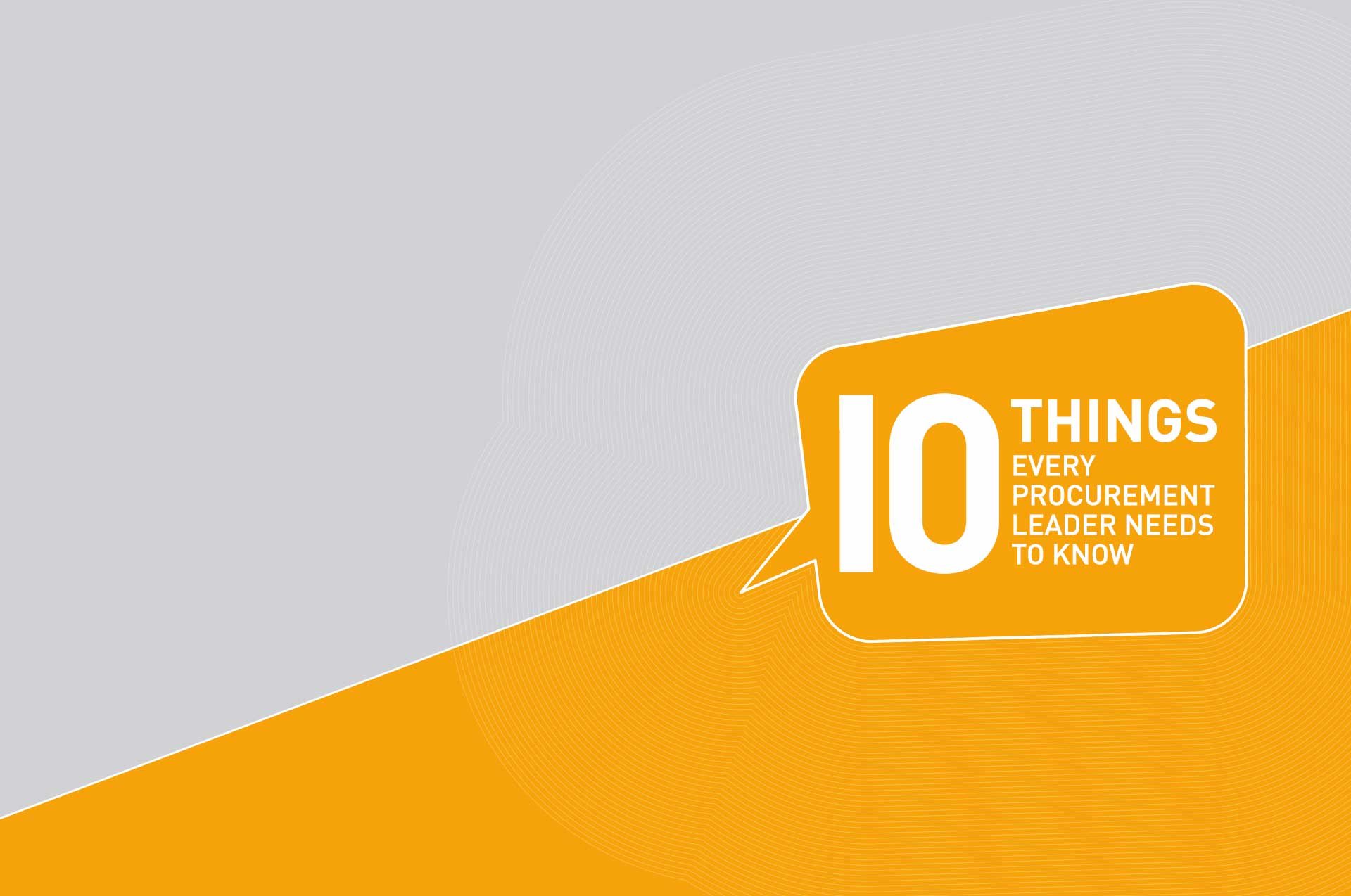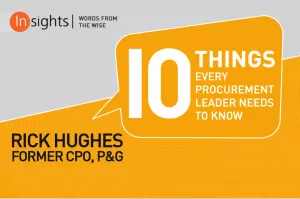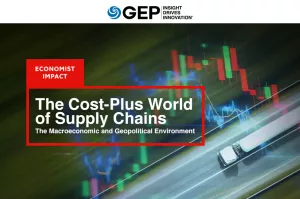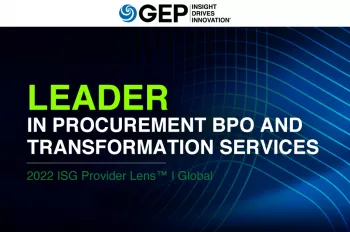A Personal Perspective on the Profession from former CPO of Procter & Gamble
During my 30-plus years as a sourcing and procurement professional, I’ve seen the role of procurement at global enterprises transformed – and with that, the role of a procurement leader. Chief procurement officers and other procurement leaders have increased reach and responsibility – which, in general, continues to yield excellent results for the enterprise.
I’ve learned a few things in the course of my career that may be useful to other procurement leaders, either on the job today or in the making. I have been asked to share them with you. Here are 10 lessons, and I confess, some of these I came by “the hard way.” Now, perhaps, you may not need to …

Procurement isn’t brain surgery
As much as we might like to believe otherwise, buying is simply the exchange of money for goods/services. Smart buyers do this efficiently and effectively. This is not an innate skill or natural talent, although some buyers are more adept than others. Smart buyers can be made, trained, learn skills, and can be refined and improved over the years they are buying. Procurement organizations need to ensure that a process of continuous improvement for the organization is in place. If you stop investing in training and development, the organization stagnates, and so do results.

Analytical skills are important, but so are communication skills
Some of the smartest people who worked with me were unbelievably brilliant, but couldn’t convey their strategy for their category/supply base, etc., to other stakeholders. Their analysis of situations was insightful, introspective and brilliant, but nobody could understand their conclusions or recommended actions. Buyers must able to communicate their ideas and strategies effectively to increase their reach and impact within the enterprise.

Choose your battles wisely
As a young CPO, I pursued our financial services spend, and wanted to be aggressive at driving value in the CFO’s “domain.” I wanted him to understand why procurement should be involved and lead the sourcing and supplier selection work. Showing up the CFO with others in the room (and having it get back to his boss, the CEO) is not a good way to start an assignment. I survived that mistake, but chose my battles more carefully in the future (particularly with the CMO and CLO).

Believe in your suppliers
I received a number of complaints from suppliers in a particular category selling commodities to P&G. They complained of the buyer being dishonest and unprofessional. I had worked with the buyer for years, even promoting him twice. I thought the accusations were baseless and unfounded. As I was leaving the role (normal rotation), my successor came in behind me and learned of the issue. He investigated, and found the accusations to be true. The buyer was fired immediately, and I learned that my faith and trust had been misguided – and the suppliers were simply trying to right a wrong. Role rotations for buyers and leaders can help avoid this pitfall.

Speak non-procurement
When engaging with business leaders, I saw person after person talk about “sourcing strategies,” “make vs. buy,” “industry analysis,” “market intelligence,” and how suppliers think or feel. I would watch business clients fall asleep as we discussed supplier negotiation strategies. Rarely did we talk about the business in a language the leaders understood most – growing new businesses, providing customer value, driving speed to market. Buyers should speak business language as well as procurement-speak.

Surround yourself with people you don’t like
I had a lot of people who worked directly with me, at all levels, and were challenging to manage, primarily because they thought independently, and sometimes went off and did things on their own. Business leaders would call and complain, and I would need to smooth things over. This was a real pain, but these procurement professionals were pushing the envelope, and bringing diverse viewpoints (from my own) to the problems. It was extra work, but often resulted in a better, more holistic solution to a challenge we faced.

Managing cross-cultural teams is a lot of work
Many of our procurement leaders in North America had to be educated on the complexities of crosscultural teams. For example, if you have a team call with people in North America, Asia and Europe – who stays up late? In the U.S., most would say Asia – but the Asians shared with me how many nights they were on calls until 1, 2 or 3 a.m. Being equitable about these burdens falls on the shoulders of the leaders. Customs and practices vary widely across the globe – make sure your team understands what is OK in one country may not be elsewhere.

All categories can be strategically sourced — but it may take time
One of the sacred areas for strategic sourcing at P&G was media expenditures. This was huge, and a category that procurement leaders had attempted to infiltrate and leverage for years (decades). We professionally leveraged most other marketing categories (agencies, promotional goods/services) but media was the “sacred cow.” I convinced our CMO that procurement to vastly improve the value equation on media spend, only to be usurped a little later by other leaders in the media space. It took years of chipping away, and pushing on business leaders. When we finally entered the space, there was substantial value derived in many areas (besides just cost per eyeballs to watch the commercial). Be patient and persistent.

Consultants can be a double-edged sword
Several outside service providers offered great value to procurement in strategy development, benchmarking, acquisition integration; others simply borrowed our ideas and repackaged them. Consulting firms should determine where and how to play, and look for their unique value add when approaching clients. Companies like GEP are excellent value – they provide needed services (like savings generation, transaction management) and don’t over-emphasize the academic.

Complexity is the enemy
As the size of our business grew, so did our spend. As our spend grew, so did our organization. We had buyers in over 80 locations and, in many cases, multiple buyers working with the same suppliers in a single category in multiple regions. Part of our transformation was to streamline and simplify the work, the structure, the focus and the systems. In addition, we streamlined our supply base (in 30 percent reduction chunks). This “weed and feed” approach rewarded strong suppliers and top performers, and enabled others to focus elsewhere. It isn’t easy, but it ’s necessary as part of doing business. It must be positioned to suppliers as an opportunity to win more business, rather than a threat of loss.
About the Author:
Rick Hughes is an industry giant, respected for his insight, candor, leadership skills and deep procurement expertise. Formerly CPO of Procter & Gamble (P&G), Rick has served in a variety of leadership roles in more than 31 years with P&G, where he developed and transformed the company’s purchasing team into a best-in-class model for Global 2000 and Fortune 500 enterprises worldwide, and one of the most benchmarked procurement organizations in history.
Today, Rick works with GEP to advise Fortune 500 and Global 2000 clients worldwide on procurement transformation, organizational development, supply innovation, global risk management, and other strategic issues related to procurement and supply chain management.
Theme: Procurement



